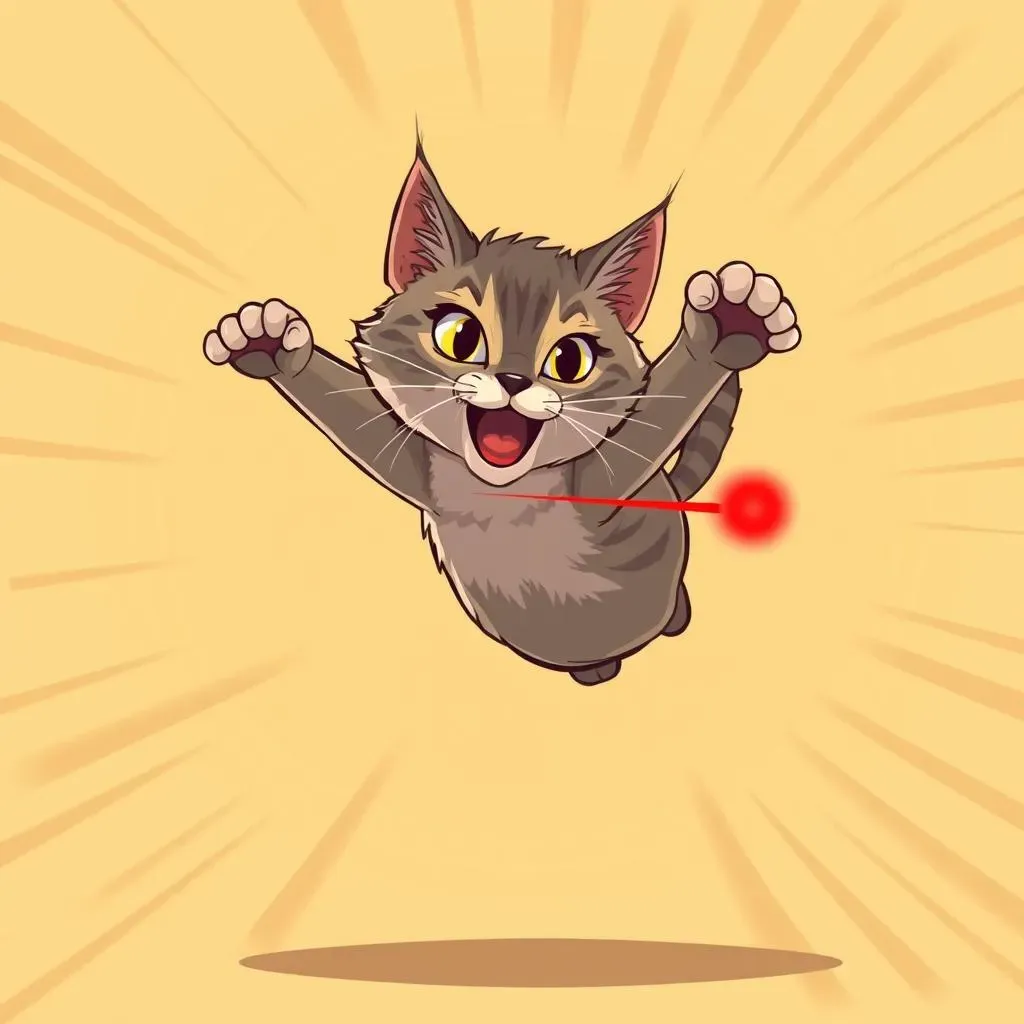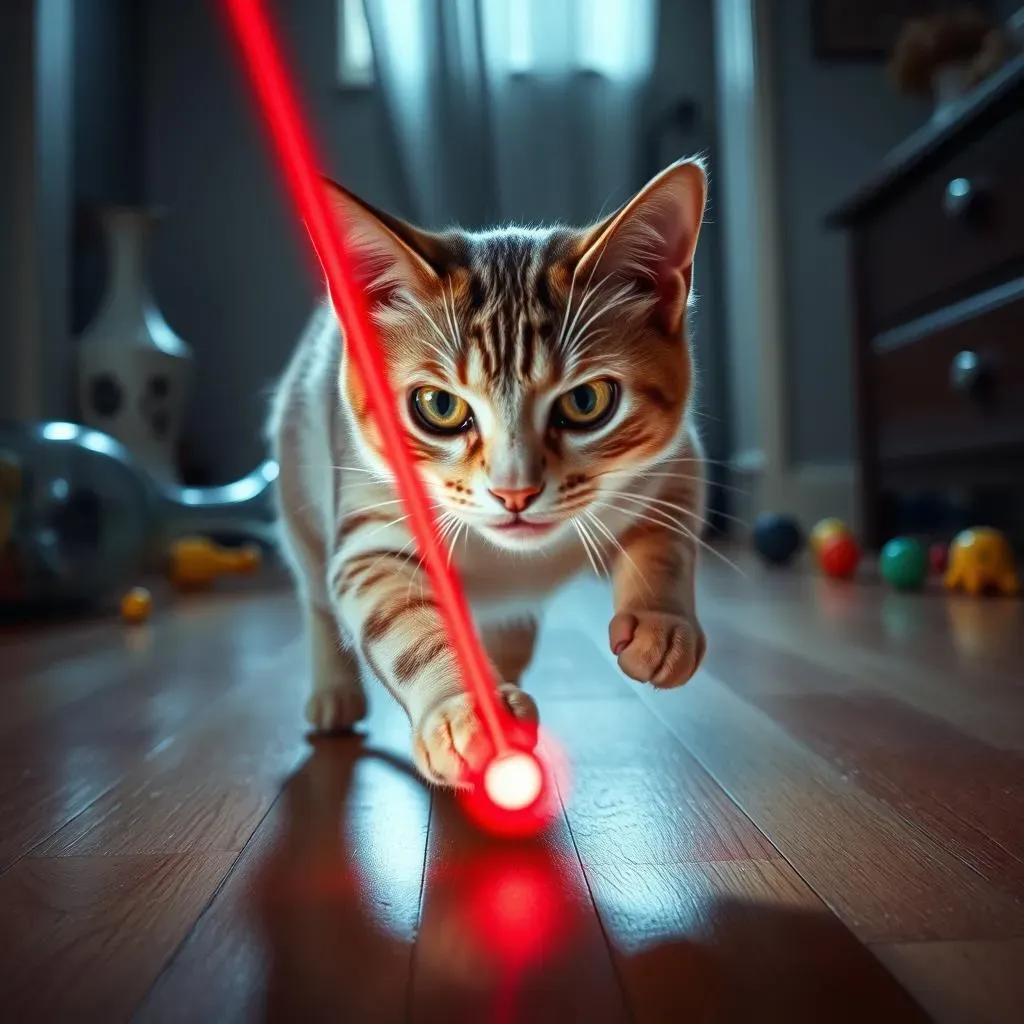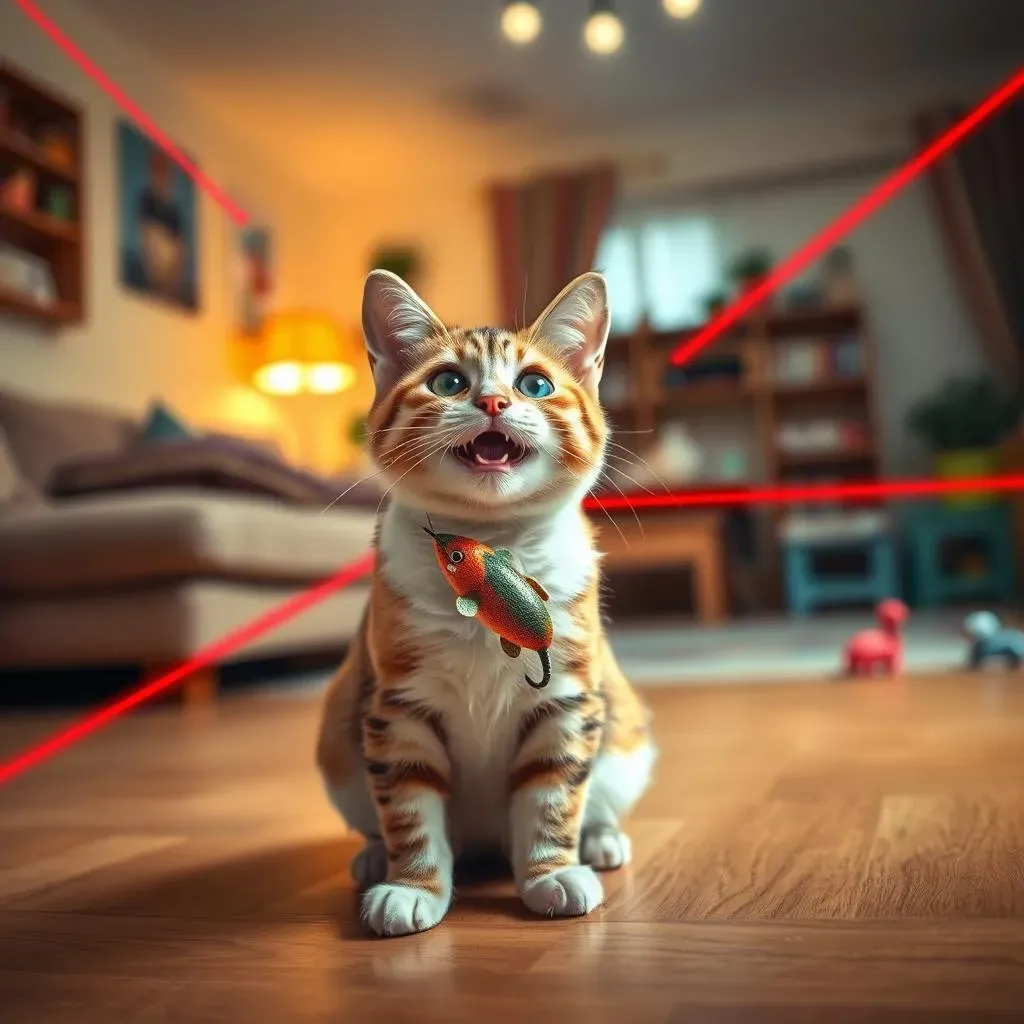Table of Contents
That little red dot. It sends cats into a frenzy, doesn't it? You've probably seen your feline friend transform into a tiny, leaping predator when a laser pointer comes out. But is this endless chase actually good for them? We're going to explore the world of "laser cat toy good or bad" and get to the bottom of whether these popular toys are a harmless source of fun or if they might be causing more harm than good. We’ll look at why cats are so obsessed with the laser, the possible problems it might cause, and, most importantly, how to use them safely to keep your furry pal happy and healthy. Get ready to learn how to make playtime both engaging and safe, ensuring your cat gets the best out of their laser chase.
The Allure of the Laser Dot: Why Cats Go Wild

The Allure of the Laser Dot: Why Cats Go Wild
Ever watched your cat turn into a furry little ninja when a laser dot appears? It's like they're suddenly channeling their inner tiger. That's because, for cats, that tiny red dot is the ultimate prey. It mimics the erratic movements of a small animal, triggering their natural hunting instincts. They're hardwired to chase, pounce, and capture, and that laser dot is just begging to be caught. It’s all about the chase, the thrill of the hunt, even if it's an imaginary one. This is why they’ll stalk, leap, and twist, showing off some serious acrobatic skills just to get close to that elusive light.
Potential Pitfalls: When Laser Play Goes Wrong

Potential Pitfalls: When Laser Play Goes Wrong
The Frustration Factor
Okay, so the chase is fun, but here's where things can get a bit tricky. Imagine always trying to catch something you never can. That’s what it's like for cats with a laser pointer. They stalk, they pounce, they get super excited, but they never actually get to sink their claws into anything. This can lead to frustration and even stress. It’s like being promised a delicious treat, only to have it snatched away every single time. No wonder some cats start to look a bit miffed after a while!
It's this lack of a "catch" that can be a real problem. Cats are designed to complete the hunt, and that includes the final act of capturing and, well, "dispatching" their prey. When they're constantly denied this, it can leave them feeling unsatisfied and maybe even a little bit anxious. Think of it like reading a really exciting book but never getting to the end – frustrating, right?
Behavioral Changes and Obsession
Another thing to watch out for is how a laser pointer might change your cat’s behavior. Some cats can get a little too obsessed with the game. They might start constantly looking for the laser dot, even when you're not playing, or become overly agitated when they don't see it. It's like their brain is stuck in "hunt" mode all the time. This constant state of alertness can be tiring for them and might lead to some unwanted behaviors, like being more aggressive or easily startled.
It’s also worth noting that for some cats, the laser pointer can become the only thing they find exciting, which isn't ideal. They might lose interest in other toys or activities, which isn't great for their overall well-being. It's important to keep things balanced and ensure they have a variety of ways to play and engage. We don’t want a laser-obsessed kitty, right?
Potential Problem | Why It Happens | What to Watch For |
|---|---|---|
Frustration | Cats never "catch" the laser | Miffed behavior, lack of satisfaction |
Obsession | Constant hunt mode | Agitation, constant searching, aggression |
Loss of Interest | Laser becomes only exciting thing | Disinterest in other toys, lack of engagement |
Laser Safety: How to Play Smart and Keep Your Cat Happy

Laser Safety: How to Play Smart and Keep Your Cat Happy
The "Catch" and Release Method
Alright, so lasers aren't all bad, but we need to be smart about how we use them. Think of it like this: you wouldn’t dangle a treat in front of a kid all day without letting them have it eventually, right? Same goes for our feline friends. The trick is to always end the laser game with a real catch. Instead of just stopping the laser abruptly, guide the dot onto a physical toy, like a stuffed mouse or a crinkle ball. This lets your cat finally grab something, completing the hunt and satisfying that need to “catch” their prey. It's like giving them the last piece of the puzzle, making the whole game feel complete and rewarding.
Another great tip is to vary the speed and pattern of the laser. Don't just make it a straight line across the floor. Think like a real mouse – it darts, it hides, it changes direction. This makes the game more engaging and less predictable, keeping your cat mentally stimulated. And remember, playtime should be a fun bonding experience, not a frustrating exercise. By incorporating a “catch” at the end, you're making sure your cat feels accomplished, not defeated. It is all about making the chase fun and rewarding.
Safety First: Protecting Those Precious Peepers
Now, let's talk safety. First off, never, and I mean never, shine that laser pointer directly into your cat’s eyes. It’s like staring into the sun – not good! A laser can cause serious damage to their vision, and we definitely don't want that. Always aim the laser at the floor or wall, and make sure it's away from their face. And while we're on the topic, it's also a good idea to keep the laser away from any reflective surfaces like mirrors or glass, as the reflected light can be just as harmful.
Another thing to consider is the type of laser you’re using. Make sure it’s a low-power laser pointer designed for pet play. Avoid using those high-powered ones that are meant for presentations, as they're way too strong and can be dangerous. Think of it this way: you wouldn’t give a child a super sharp knife to play with, right? Same logic applies here. A little caution goes a long way in keeping those precious peepers safe. And always supervise your cat during playtime. This way, you can make sure they're having fun and staying safe at the same time.
Safety Tip | Why It's Important |
|---|---|
End with a "Catch" | Satisfies the hunting instinct, prevents frustration |
Avoid Eyes | Prevents eye damage |
Use Low-Power Laser | Reduces risk of harm |
Supervise Play | Ensures safe and fun playtime |